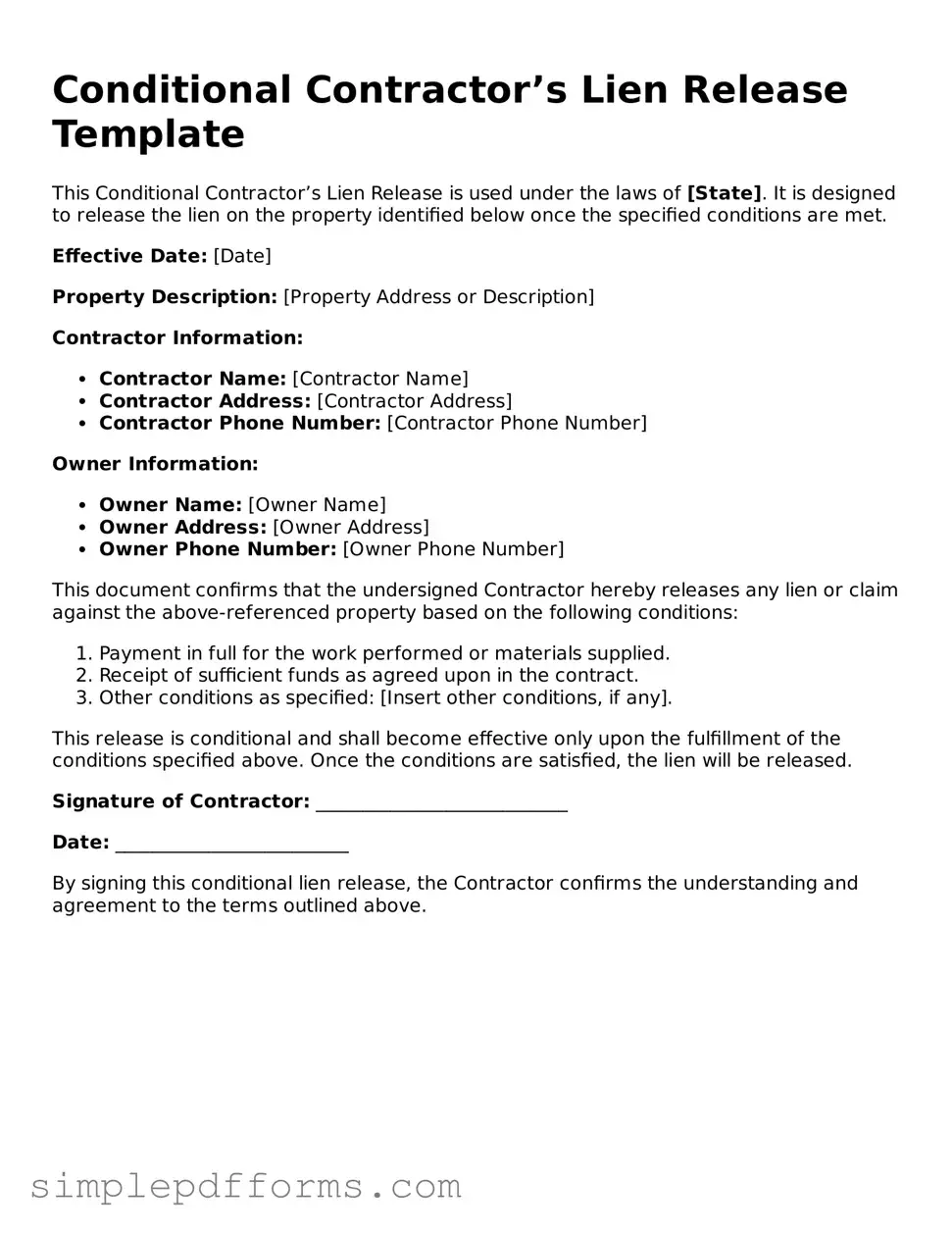Conditional Contractor’s Lien Release Template
This Conditional Contractor’s Lien Release is used under the laws of [State]. It is designed to release the lien on the property identified below once the specified conditions are met.
Effective Date: [Date]
Property Description: [Property Address or Description]
Contractor Information:
- Contractor Name: [Contractor Name]
- Contractor Address: [Contractor Address]
- Contractor Phone Number: [Contractor Phone Number]
Owner Information:
- Owner Name: [Owner Name]
- Owner Address: [Owner Address]
- Owner Phone Number: [Owner Phone Number]
This document confirms that the undersigned Contractor hereby releases any lien or claim against the above-referenced property based on the following conditions:
- Payment in full for the work performed or materials supplied.
- Receipt of sufficient funds as agreed upon in the contract.
- Other conditions as specified: [Insert other conditions, if any].
This release is conditional and shall become effective only upon the fulfillment of the conditions specified above. Once the conditions are satisfied, the lien will be released.
Signature of Contractor: ___________________________
Date: _________________________
By signing this conditional lien release, the Contractor confirms the understanding and agreement to the terms outlined above.
